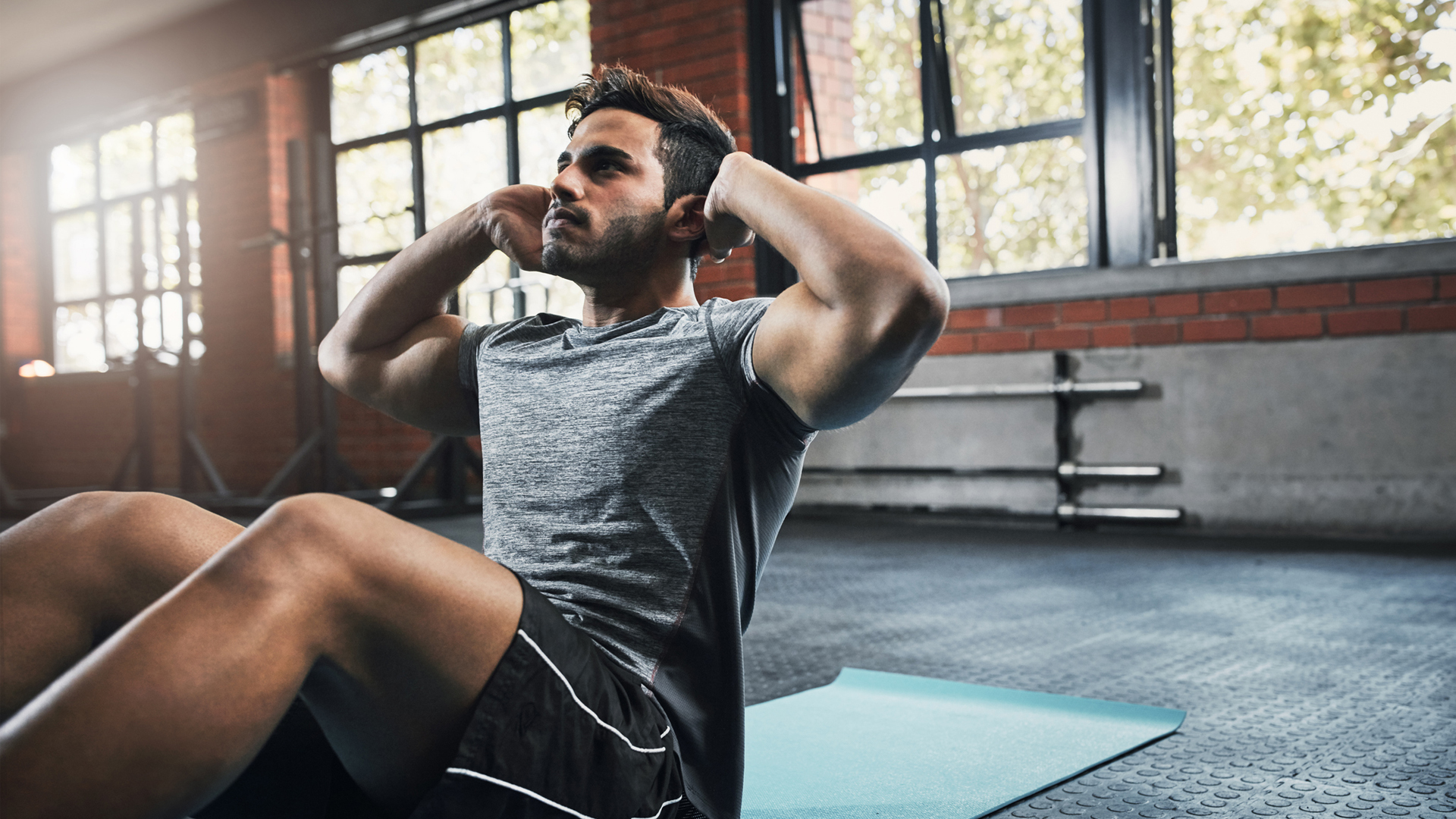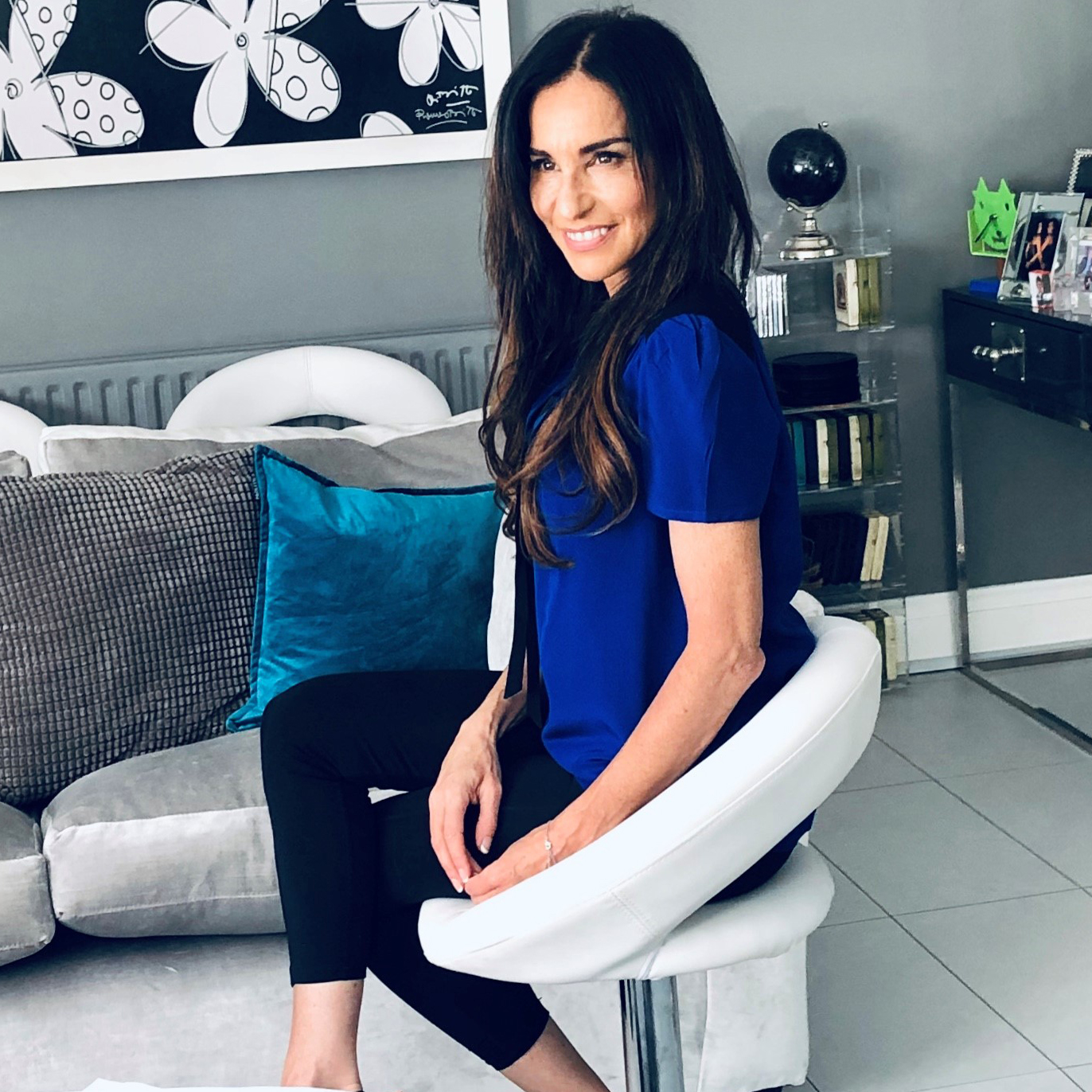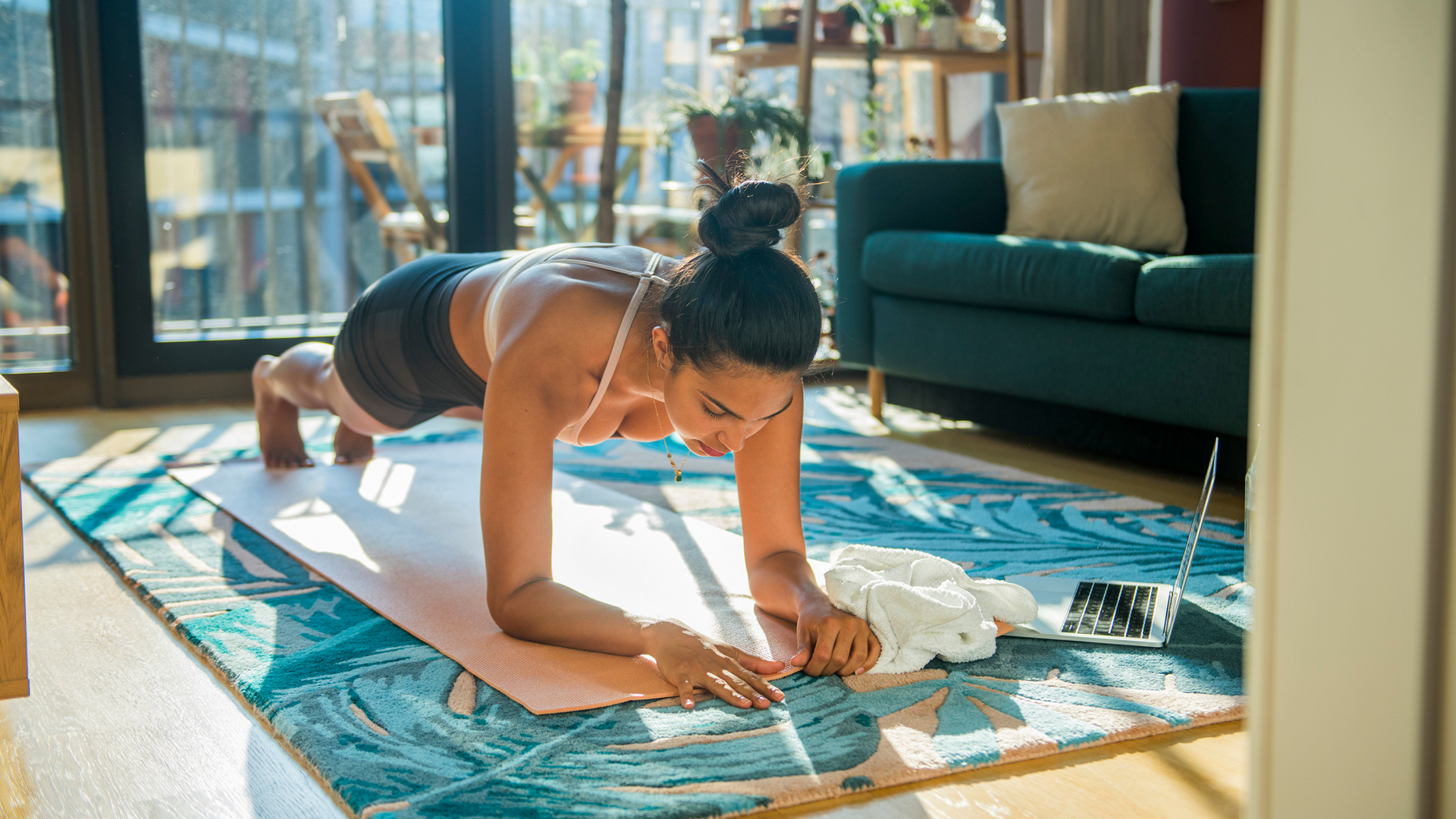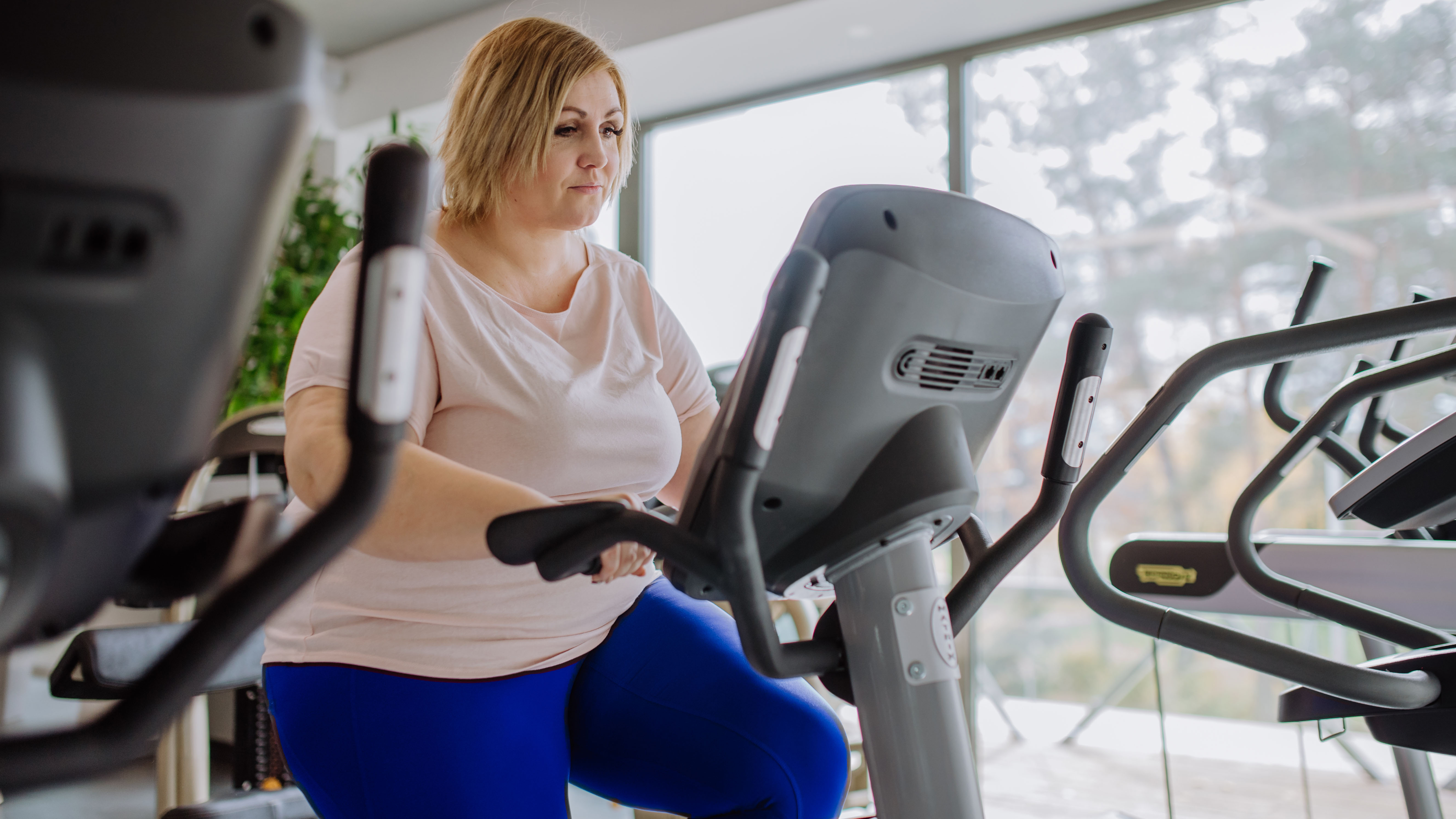Which exercise burns belly fat? Here’s what the science says
We dispel fitness myths and answer the common question, ‘Which exercise burns belly fat?’

Which exercise burns belly fat? It’s easy to understand why this is a frequent fitness query, with many people citing a firmer midsection as one of their main motivators to exercise.
There are a lot of myths surrounding the subject that are in dire need of debunking. First and foremost among them: the majority of scientific studies show it is not possible to spot reduce body fat from one targeted area (such as the belly) at a time.
However, you can lower your overall body fat percentage by increasing your activity levels and lowering your calorie consumption. We spoke to a physiotherapist and biochemist to find out the most efficient way to do this – and to clear up some falsehoods about reducing belly fat.
Can you lose weight just from your stomach?
No specific exercise, even those focused on muscles in the stomach, can be used to target belly fat. Physiotherapist Sammy Margo, of Deep Heat and Deep Freeze, points to several studies to support this.
“One study which targeted abdominal fat with exercise for 6 weeks showed no difference in belly fat. Another study in 40 overweight and obese women found that resistance training of the abdominals for 12 weeks had no effect on belly fat loss compared with dietary change alone.
“A 12-week study in which 104 participants who completed a training programme exercising one arm only found that some overall fat loss did occur, but not on the arm being exercised. And several studies have confirmed that spot reduction is not effective for burning fat in specific areas of the body, including the arms and stomach.”

Sammy Margo has been a chartered physiotherapist for 32 years and has built up her clinic over the past 28+ years. She trained as a chartered physiotherapist and did a Masters in Physiotherapy (MSc) at University College and Middlesex Hospital. She's also a qualified Pilates instructor and the author of The Good Sleep Guide.
The reason for this, and the fat loss process, is far from simple, as Margo explains.
“The fat in body cells is in the form of triglycerides which are stored in body fat that can be used to supply energy,” she says. “Before they can be used for energy, triglycerides must be broken down into smaller molecules – free fatty acids and glycerol - which enter the bloodstream. These smaller molecules are used to produce energy.
“When you exercise, the triglycerides can come from any of the fat cells in the body, not only from the body area being exercised.”
Margo does say there are a couple of smaller studies that go against the grain, supporting spot reduction of body fat. She says that further studies into the subject are needed to draw a more definitive conclusion.
Where do you lose and gain fat first?
Where you lose or gain fat will depend on contextual factors such as your genes, gender and age, as well as your stress-levels, hormone balance, genetics and lifestyle.
For example, a 2012 study published in the National Library of Medicine found that “gluteo-femoral adipocytes of women are larger than in men”. Or, in other words, women were found to hold more fat around their hips and thighs than men.

“Women tend to build up fat in their hips and buttocks; men usually build up fat in their abdomen or belly,” Margo says.
“Obesity tends to run in families, suggesting that genes may play a role. Genes may also influence the amount of body fat you have and where in the body it is stored”.
She also says age plays a role, as “older adults tend to have more body fat”.
Can you burn belly fat by doing ab exercises?
Even if you use the best ab rollers or perform ab exercises like planks, studies show you cannot spot reduce belly fat by performing exercises that target muscles in this area during exercise.
Instead, working your core muscles with abdominal exercises like sit-ups should be seen as a way to build a stronger, more functional body.
“These exercises can improve core strength, posture and balance,” Margo says. “They can reduce back pain and improve flexibility. The jury is out on whether they can reduce belly fat, and indeed fat in all areas of the body.”
Which exercise burns belly fat?
If your goal is to lose belly fat, the best way to achieve this is to lower your overall body fat percentage. To do this, you must expend more calories (through exercise and everyday activities) than you consume in a day to achieve a calorie deficit.
“All exercise contributes to a calorie deficit,” Margo says. “Try high intensity interval training (HIIT) as it is time efficient. In a meta-analysis of 13 studies, HIIT – like most moderately intense training – was found to improve body fat mass and waist circumference. Aerobic or cardio exercise (such as a session on the best treadmills or exercise bikes) also helps to reduce body fat. But HIIT takes up less time.”

Weight training, while more commonly associated with hypertrophy goals, is another strong option for those looking to lose weight. A 2021 Sports Medicine study on the subject found that “resistance training reduces body fat percentage, body fat mass and visceral fat in healthy adults”.
The key to losing fat long-term is finding a form of exercise you enjoy so that participation becomes habitual. The CDC suggests that “people who lose weight gradually and steadily (about one to two pounds per week) are more successful at keeping weight off”.
How to burn belly fat
If you want to efficiently shed body fat, you'll need to take into account various factors such as your diet and daily activity levels (NEAT), as well as your time spent exercising.
“Non-exercise activity thermogenesis (NEAT) describes the calories burned from all of the movement you do during the day that is not exercise, and it can make a difference in your weight loss,” Margo says. “Examples of NEAT are cooking, shopping, walking and gardening – essentially day-to-day activities.
Alongside increasing your exercise levels and NEAT, the third key component to burning fat is finding an appropriate diet. You will need to create a calorie deficit by consuming fewer calories than you burn each day but (especially for those taking part in regular exercise) it is important this deficit is not so great that it’s unsustainable.
Margo has shared some tips on decreasing daily calorie intake. “Increasing protein intake may reduce appetite and hence reduce calorie intake,” Margo says. “It may also help preserve muscle mass during weight loss.
“...Make sure to get enough sleep (usually around 7 hours, although people differ in their sleep needs). Lack of sleep is linked with obesity in general and also lower fat loss on a low calorie diet.”
Biochemist Tim Bond, a researcher from the Tea Advisory Panel, adds: “Fill up on fiber as this has a prebiotic effect (increasing production of short chain fatty acids in the large intestine which communicate with hunger hormones and help to promote satiety.)
“Also, emphasize whole grains rather than processed grains and focus on intake of fruit and vegetable and bean intake.”

Tim Bond is a chemist, natural health expert and researcher across food, beverages including tea and herbal infusions, and natural health sectors for 28+ years. Tim has a national and international reputation, publishing peer review research papers across tea, herbal infusions and natural health and is a contributor to several books on the science and historical aspects of tea. In this role as a researcher, Tim covers all aspects of research and development for a diverse global base, including regulatory, health claims and sustainability issues. Tim also lectures at global food, beverage, and natural health events.
Another recommendation Bond proffered was to try and reduce your stress levels, as research shows “stress increases adrenal gland hormones like cortisol which increase habit and increase central fat storage”.
How important is diet for burning fat?
A 2007 study published in the Nature Clinical Practice Endocrinology & Metabolism found that diet is a more important factor than exercise levels when losing weight, but a two-pronged approach that combines diet with increased activity levels is more effective than either method used in isolation.
“Both diet and exercise are important for weight loss,” Margo says. “For weight loss, it is necessary to create a calorie gap. That is, you must burn more calories than you consume. It is easier to create a calorie gap by eating less (eg. reducing your calorie intake by 500) than by exercising.
“Exercise is important though. Strength training, for example, helps to preserve lean body mass (muscle) which can increase metabolic rate so you burn more calories even at rest.
Sign up for the Live Science daily newsletter now
Get the world’s most fascinating discoveries delivered straight to your inbox.

Harry Bullmore is a fitness writer covering everything from reviews to features for LiveScience, T3, TechRadar, Fit&Well and more. So, whether you’re looking for a new fitness tracker or wondering how to shave seconds off your 5K PB, chances are he’s written something to help you improve your training.
When not writing, he’s most likely to be found experimenting with a wide variety of training methods in his home gym or trying to exhaust his ever-energetic puppy.
Prior to joining Future, Harry wrote health and fitness product reviews for publications including Men’s Health, Women’s Health and Runner’s World. Before this, he spent three years as a news reporter with work in more than 70 national and regional newspapers.










